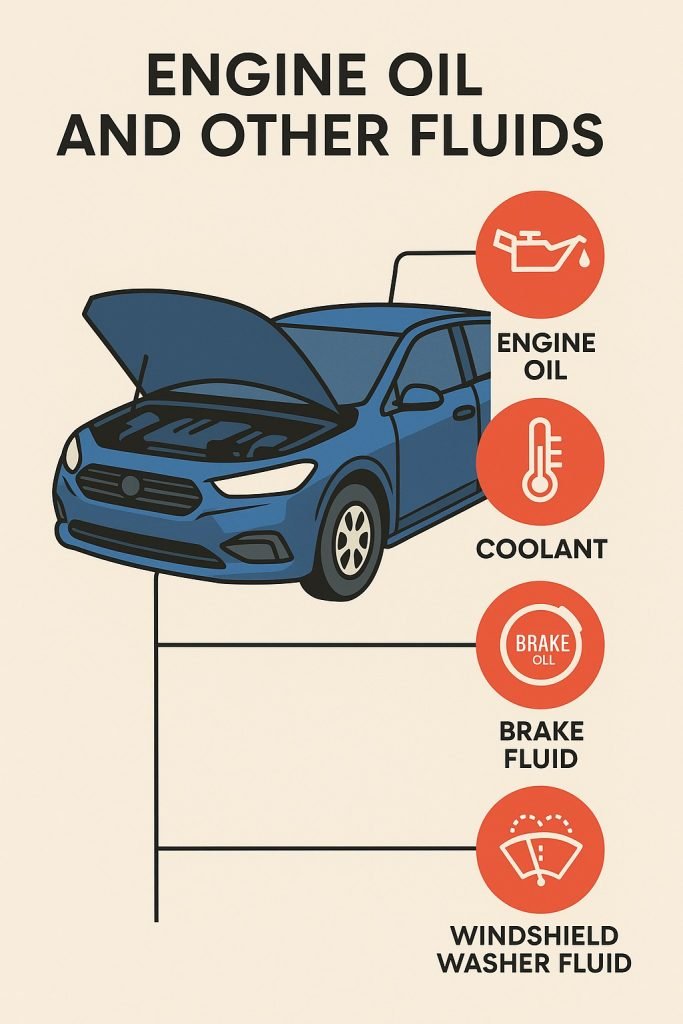
Introduction
Just like your body needs blood to function, your car needs fluids to run smoothly. Neglecting oil and fluid maintenance can cause serious engine damage, breakdowns, or even accidents. Learning how to check and maintain fluids is a key part of responsible vehicle ownership.
Engine Oil
-
Purpose: Lubricates moving parts, reduces friction, and prevents overheating.
-
How to Check:
-
Park on level ground, turn off the engine, and wait a few minutes.
-
Pull out the dipstick, wipe it clean, reinsert it, and check the oil level and color.
-
-
When to Change:
-
Follow the owner’s manual (usually every 3,000–7,500 miles, depending on the car and oil type).
-
-
Warning Signs: Dirty or dark oil, engine knocking sounds, or dashboard oil light.
Other Essential Fluids
-
Coolant/Antifreeze: Prevents overheating and protects the engine in cold weather.
-
Brake Fluid: Allows proper brake function—low or dirty fluid can lead to brake failure.
-
Transmission Fluid: Ensures smooth gear shifts; should be checked regularly.
-
Power Steering Fluid: Helps the steering feel smooth and controlled.
-
Windshield Washer Fluid: Keeps your windshield clean for clear visibility.
Why Fluid Maintenance Matters
-
Prevents engine damage and costly repairs.
-
Ensures safety systems like brakes and steering work properly.
-
Helps your car run efficiently and last longer.
Takeaway
Fluids are the lifeblood of your vehicle. Regular checks and timely changes are simple habits that prevent breakdowns and keep your car safe on the road.
